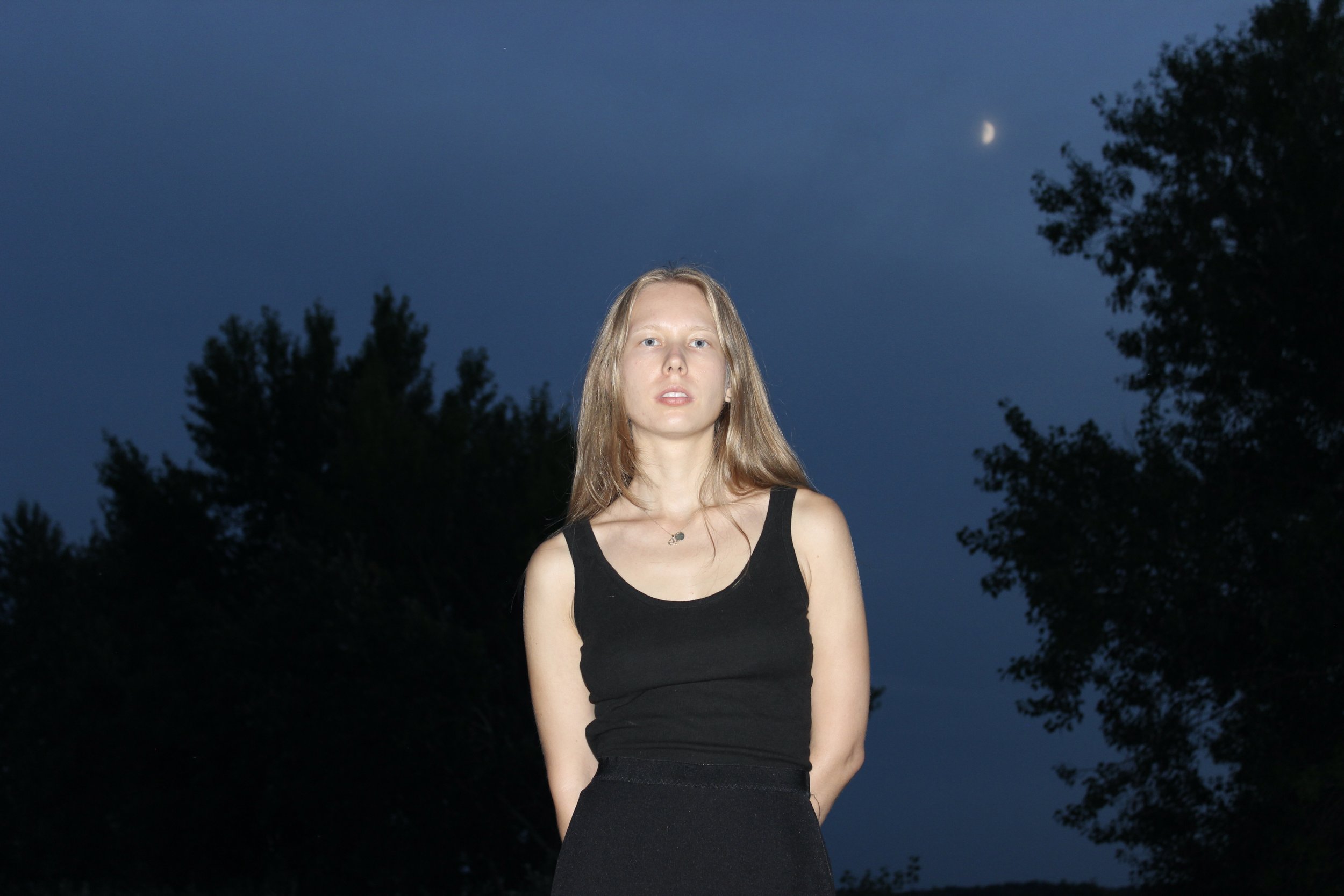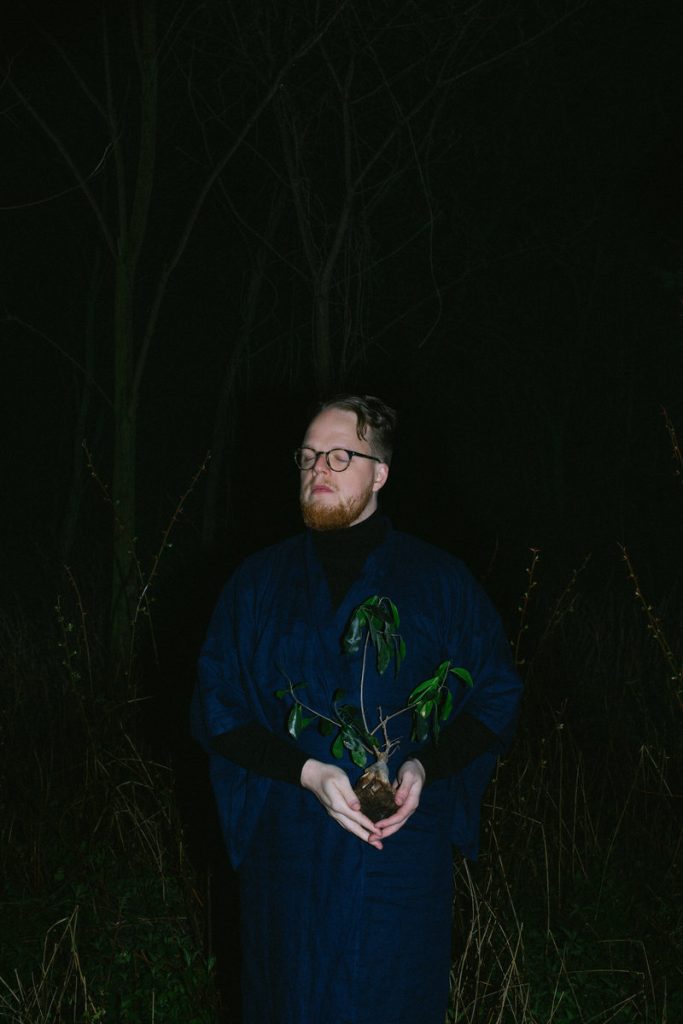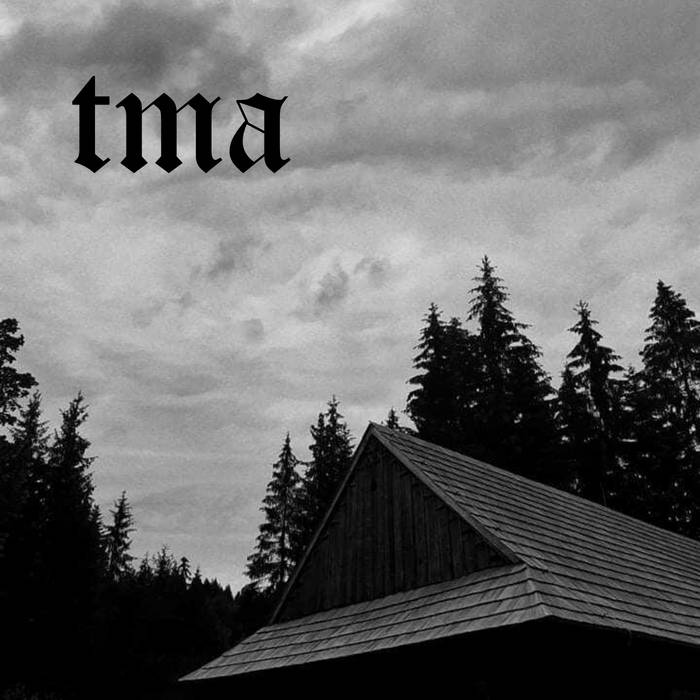Re-Enchanted Kingdoms
Published March, 2024
by Michael Papcun

Or the idiosyncratic topography of contemporary Slovak folk-music
Re-enchanting mechanisms
Max Weber’s Disenchantment of Society refers to the process of rationalisation of culture in Western society in the wake of the Age of Enlightenment and the Industrial Revolution and the weakening of spiritual or “occult” reasoning in a modernised, scientifically based and bureaucratic society.
According to philosopher Marcel Gauchet, the disenchantment of the world contributes to the decline of collectivism in favour of an individualistic mindset. Identity is not given from above. The individual must find and define it for himself. The response to such social dynamics is also the inability to live in the disenchanted world. And the answer is the re-enchantment of the modernised world. This dynamic can take many forms: the return of the irrational or the recent affective turn, the rise and popularity of psychoanalysis at the beginning of the previous century, or the increase of the popularity of the new age movement and esoteric directions of interpretation of the world.
For example, we can trace the re-enchantment of the world in contemporary folklore-turns, also so-called neo-folklore, that tries to return to the pre-Christian era of thinking to mysticism, cults, or original folk symbolism. Alternatively, it finds its models in fantasy literature and modern mythology, picking up on the dungeon turn and the popularity of fantasy worlds in contemporary visual culture. We observe the return or reconstruction of occult cultures – “occulture” – sets of folk or fringe doctrines and spiritual beliefs and practices, standing in contrast to the dominant (mainstream) ideologies.
This reconstruction of occultures and their ethos, or experimental revival of original folklore motifs, is also one of the distinctive turns on the Slovak alternative and underground music scene. It is often surprising how diverse forms this neo-folk turn can take, whether in an intentional or unintentional effort to avoid rigid folklorism, which is a disservice to the original traditions and exchanges authenticity for tendentious artifice.
The gateway
The ideal gateway to this fluid occultural world within the Slovak music scene may be Nina Pixel’s tech-folk recording, Ancestral Archeology, from 2022. Pixel followed the LIPTOV project of the Punctum Tapes label, where she and other producers (Oliver Torr, Macronoise, Evil Medvěd, Exhausted Modern, etc.) were invited to reinterpret traditional folk songs of the Liptov region. Subsequently, she brought a techno album that returns us to the ritualistic primordial essence of rave and club music. Dance tempos and industrial tropes mix with folkloric motifs, samples reminiscent of the surreal landscapes of Slovak fairy tales, both literary and television. We return to the beliefs of the indigenous population, topics of the pagan folklore such as witchcraft (or rather herbalism and ointment making), and, in short, to the magical, enchanted thinking about the world from the pre-Christian times. Ancestral archaeology raises the question of what contemporary folklore is. Or rather, what are its contemporary forms and shapes? As we shall see, the answers to this question vary.
On the Borders
Slovak-Hungarian musician Adela Mede comprehensively unpacks a style of thinking similar to Nina Pixel on albums How We Grow (2019), Szabadság (2022) and Ne Lépj Virága (2023). In principle, it is a blend of contemporary experimental electronica and elements of folklore music. The recordings are dominated by Adela’s voice and drone composition style, which blurs electronics with the powerful sound of the accordion. The soundscape is reminiscent of a pilgrimage across the Hungarian “pusta” and floodplain forests, almost mythical topography typical of the Slovak-Hungarian borderlands near the Danube River. The past (folklore) and the present (elements of experimental music and composition) are not in dialogue here but instead in a harmonious duet. In the words of Adela Mede:
“For me, the presence of folk in contemporary music represents a thirst for storytelling to gain perspective. Looking to history for answers for the present. We can understand the reality of the present a lot better if we strip down some layers. In my case, it goes even further in trying to understand myself as a Slovak-Hungarian who has been taught to always look to the West, only to find out I don’t belong there. So ultimately, I am searching for authenticity in terms of culture, (inter)national identity, and who I am as a human being.”
Adela is very sensitive about the relationship between contemporary music and folk: “I am very sensitive to how folk is used in contemporary music, and I try my very best in my music for it to not become a pastiche or a just a sampleable concept recontextualised. But I try to think about how the narratives of the past still relate to the present. When I listen to the works of Márta Sebestyén and Muzsikás (music my parents used to dance to), I try to identify the concepts which apply to my reality. It’s important for me that there is conceptual relevance beyond simply what I find nice.”
As I mentioned before, the dominant feature of Adela’s albums is her voice, forming the main line across the tracks. She acts as our sonic guide amidst the misty drone landscape. Adela adds: “I joined a Slovak-Hungarian choir recently, and it’s been exciting to me how much I struggle to connect to the songs we sing sometimes. The relationship I have with folk is something I foster from within. While sometimes aesthetically, it is related to the region I am from, to me, it’s also about how well I can have human connection. I feel folk in Holly Herndon’s ‘Frontiers’ as much as I feel it in Ani Zakareishvili’s music or the Bulgarian State Television Female Choir.”
Also, the topographical character of Adela Mede’s music could be described more clearly: “I also still feel like an outsider slowly building a geographical relationship with Southern Slovakia. Not because I lived in London for four years but because I never looked to my region for beauty. I want to make sure I approach it with care and an open mind, to make sure I don’t just become an appropriator of something I believe are my “roots”. I’ll be playing more gigs in Southern Slovakia this year and am very excited about it.”
Adela Mede’s music is the music of the borderland, especially in the psychological sense. It maps the ambiguous boundaries between the present and the past, the landscape and its inner meanings within the mind.
Elves are leaving the forest

Even more imaginative is the musical work of the Slovak artist András Cséfalvay. It started with the freak-folk album Funeral the Musical and another tabletop opera (2013) released under the LOM label. The high-concept album, tuned as a bedroom opera, uses elements of acoustic music, folk-derivates as freak-folk and folktronica. Minimalist arrangements create a backdrop to the sung-spoken word, focusing on storytelling to connect the one-track songs. Funeral the Musical and another tabletop opera is thus a journey into a fragile yet complexly crafted world. It recalls a musicalised series of symbolic images.
Cséfalvay fully develops this approach on his second album, Future Role of the Church in the Forthcoming Environmental Transformation (2022), released this time by the Slovak label Weltschmerzen. This time, thanks to its sound chopped down to acoustic guitar with vocals, the album is reminiscent of the British occult-folk band Current 93 or avant-pop musician Dean Blunt. András’ music is, this time, divided into more regular “song-like” forms. He creates a hypnotic impression thanks to his handmade guitar’s simple and repetitive motifs. András’ relationship with musical instruments is not determined just by the guitar, as it may seem:
“I was trained as a classical pianist and have been taking lessons for the past twenty years. Playing baroque keyboard music connects me to something that surpasses me. But then again, the sophistication of those four-voice fugues made me abandon the career of a musician. Suppose the best work is already done. Then I tried clarinet, and in the end, I became a visual artist. But these calls don’t leave you, and perhaps from the other direction, I began to be fascinated by the simplicity of certain musical expressions. The lute and voice, John Dowland, Chet Baker, Thom Yorke, Joanna Newsom… classical technique abandoned the overpowering rawness. I still play for myself on the piano, but I do not aspire to virtuosity; I enjoy a good old acoustic instrument with a rusty sustain pedal and some inconsistencies in the keyboard mechanic. In the same way, I found my voice. I tried to code a message, but now, in performance, it is released with precise control. I enjoy performing a lot more than studio work. There is this one song about death where I try to convince myself to be brave by shouting. And it never works just shouting at a single microphone.”
What makes the recording particularly immersive is András’s delivery. The singing turns into spoken word, which in places resembles fantasy literature, in places academic essays. The album leads us through a world that resembles a diorama in motion or a cabinet of curiosities, where objects come to life, mythical creatures are real, even palpably present, and the whole world is imbued with a strong mysticism. An experience between reading a philosophical treatise and playing the game Land of Lore (1993). In András’s words:
“I believe mythology in the current age has been sidelined by much more concise, detail and prediction-oriented world models, especially Western science. While I can understand the trend, some moments and situations require returning to other knowledge. This is where Tolkien’s “fairie”comes into place. Perhaps creatures such as electrons and neutrinos exhaust certain processes. Still, for the beauty that buries the foot into the ground in awe, or for the hope that rekindles the depressed urban heart, we have other creatures and stories. I am not particularly interested in folklore or local traditions but in tackling reality from multiple angles. Can a story about elves talk about the ecological crisis? Do these ancient agents have the capacity to act on us today? I believe so – and local comes into play at that point, too.”
András’ folklore consists of a purposefully created Tolkienesque mythology and the expressive means of folk music – guitar and chamber singing or giving a speech. András resembles a troubadour, a folk storyteller of old legends, a magician, and a keeper of secrets. As with the fantastic, András’s worlds are not pure fiction but allegorical commentary: the dungeon-core aesthetic here shifts into environmental grief and contemplation of the planet’s future. It’s a folklore of existential and societal themes, interpreted by an intimate and remarkably introspective lyrical subject. From a world where the boundaries between our present and the world of the elves are blurred, the personal grows into the societal and vice versa.
Down to earth

The third example of the approach to local occulture (or neo-folklore) is the one-person black metal project TMA. The laconic title Kysucký chlad (Kysuce Cold) tells precisely what will happen. The name refers to the northern Slovak region of Kysuce, known for its complex history, poverty, hard manual labour, less lucrative job offers and thus the phenomenon of “hunger valleys” (“hladové doliny”) – small towns and villages with high rates of poverty and unemployment. TMA handles these references in a style very similar to the classic approach of Norwegian black metal.
The old-school black metal tune is very close here to the first album of the BURZUM project. Rolling surfaces of massively distorted guitars, slow and medium tempos and hypnotic guitar motifs passing into agonising melodies complement the distorted vocals with lyrically simple lyrics describing local sceneries. Those are tied, among other things, to the soil of the Kysuce region. Notoriously known for its bad-land character and difficulty to cultivate (a massive problem for the area of the mainly agrarian-based country in the past), and Slovak feudal past as part of the Austro-Hungarian monarchy.
Great example is the lyricism of track hunger / (hlad): “A shadow looms over poverty / from manor houses / a relentless hunger marches through the cottages / while in the palaces they hold feasts / a piece of bread a piece of you / prosperity or misery (Nad chudobou sa vznáša tieň/ z panských kaštieľov/ chalupami kráča neúprosný hlad/ Kým v palácoch poriadajú hostiny/ kúsok chleba, kúsok z teba / blahobyt či bieda)”, or track slave (otrok): “The sun a killer in the field / hands hard as the stone / mountain life is being fulfilled / and the river flows through eternity /… will not leave them hungry / a slave in his orchard” (Slnko vrahom na poli/ dlane tvrdé na kameň/ horský život sa napĺňa/ a rieka tečie večnosťou/ … nenechá ich o hlade/ je to otrok vo svojom vlastnom sade)”.
As the album’s Bandcamp description announces, Kysucký chlad links the ethos of the second wave of Norwegian black metal, its raw sound and return to local traditions and ancestors (which later resulted in well-known misinterpretations and deviations by the musicians themselves) through the local history and mythology of the Kysuce region. Motifs of poverty and hard life are intertwined (in the essential black metal spirit) with almost naturist motifs or the importance of the role of nature. Also, some romantic approaches are present in the old-fashioned poetics used in the lyrics. These are also supported by the booklet of the physical edition of the album on a cassette, where, in addition to the title, black and white high-contrast photo of a Kysuce wooden cottage and the Scwabach script, we can find classical romanticism-soaked photographs of winter nature. TMA thus fills a calcified image of a beautiful, but at the same time socially deprived Slovakia, not unlike, for example, Jozef Fabini’s 1961 painting Hladová dolina / The Hunger Valley. TMA just finds its means of expression in an extreme musical genre.
Black metal as a genre is generally characterised by a tendency to reject the modern. It reminds us of the life, customs and mythology of the ancestors, so it is, as a genre, a great example of the re-enchanting process in the cultural field. It functions as the perfect counterpoint to a technological, digital society. What does label head Sky Burial “Waldo “have to say about this role of black metal? The answer is very straightforward: “I release black metal primarily because I simply don’t like death metal. And have passion for black, of course”.
Topography of Slovak Neo-folklore
The almost surreal, folk-horror world of Nina Pixel is alternated by the dream-realistic landscape of Adela Mede. Then we pass through the mythical “middle-earth” of András Cséfalvay’s parables, and, with our feet firmly on the ground, we dig into the rough Kysuce soil with the TMA project. The aim of this genre-spanning text (from tech-folk, through experimental electronics working with folk motifs and freak/occult-folk simplicity to old-school black metal) is to show the ambiguity of the contemporary form of neo-folk or folklore images/imaginary in contemporary Slovak music. Folklore is not understood here as a fixed set of expressive means. Instead, it is a repertoire of occultural motifs that musicians freely borrow and subsequently recontextualise, develop, and find new interpretations and applications.
What about the topography of the original Slovak landscape? It moves on a romantic-realist axis towards the shifting and ambiguous borders of history and subjective present, dreams and realities. In each case, however, we penetrate into worlds that may seem hidden, undiscovered or overlooked at first glance, revealing new meanings and interpretative possibilities. “Owls are not what they seem to be”. Ambiguous Slovakia, harsh and magical.
Text: Michael Papcun
Photos: Adela Mede by Petra Briškova, and press photos
This article is brought to you as part of the EM GUIDE project – an initiative dedicated to empowering independent music magazines and strengthen the underground music scene in Europe. Read more about the project at emgui.de.
Funded by the European Union. Views and opinions expressed are however those of the author(s) only and do not necessarily reflect those of the European Union or the European Education and Culture Executive Agency (EACEA). Neither the European Union nor EACEA can be held responsible for them.